cultural heritage and history
Romania's cultural heritage is a tapestry woven from centuries of history, blending influences from Dacian, Roman, and medieval eras. Its medieval fortresses and castles, Orthodox Christian traditions, and folklore bring its past to life.
The Brâncovenesc architectural style, folk art, and the rich Romanian language reflect the nation's identity. Renowned writers like Mihai Eminescu and Ion Creangă, along with artists such as Nicolae Grigorescu and Constantin Brâncuși, have left an indelible mark on Romanian culture.
From UNESCO World Heritage Sites to the legacy of communist rule, Romania's cultural heritage is a dynamic fusion of tradition and contemporary creativity, celebrating the nation's complex and captivating history.
sarmizegetusa
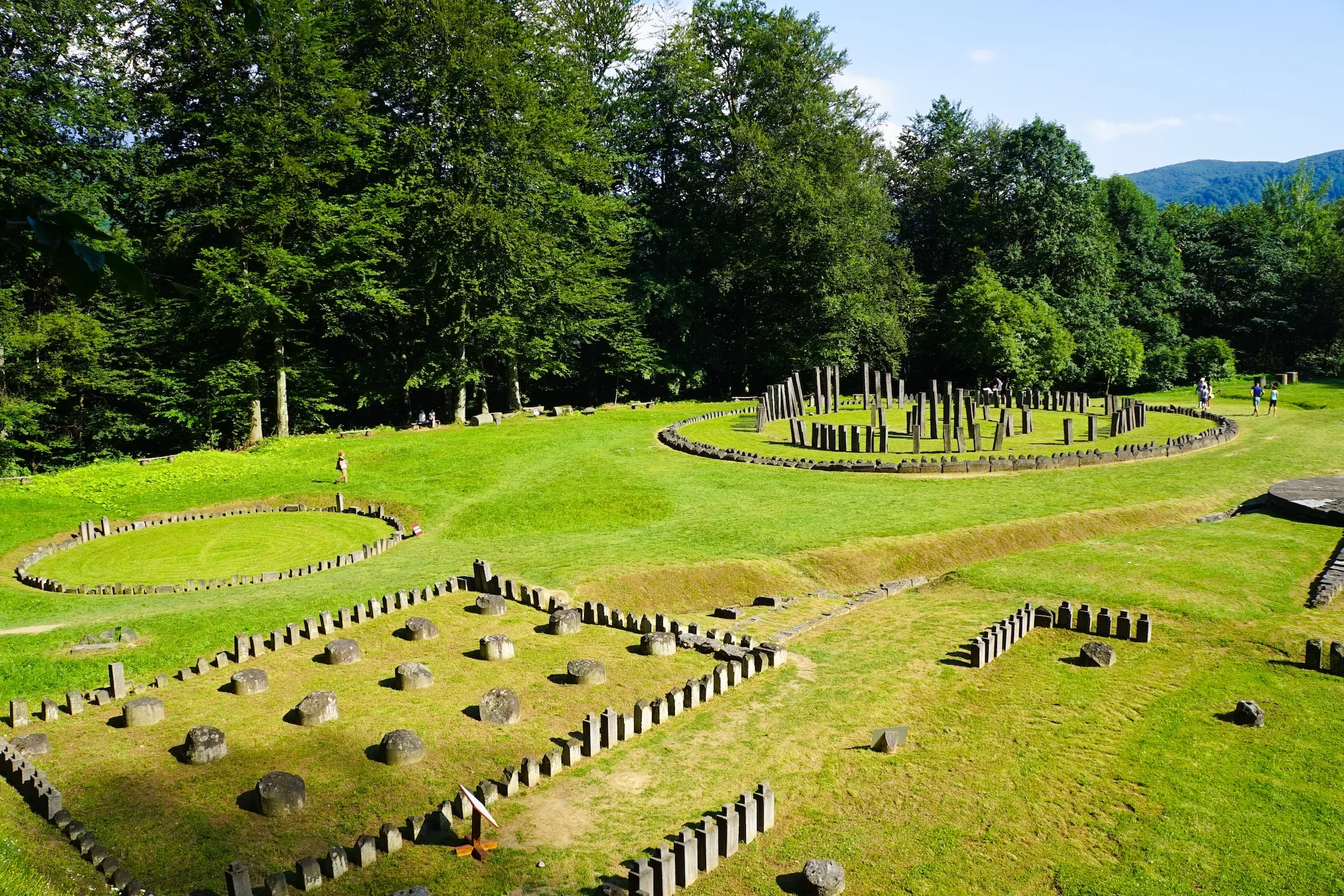
Romania's historical roots run deep, tracing back to the ancient era when it was inhabited by the Dacian people.
Their rich culture and civilization thrived in the region, leaving behind traces of their legacy. However, the course of history took a significant turn when the formidable Roman Empire extended its dominion over these lands.
The Romans not only conquered Dacia but also left an enduring mark on the region's cultural landscape. Their influence is evident in the archaeological treasures that dot Romania, offering glimpses into the Roman way of life.
Moreover, the Romanian language, a Romance language with Latin roots, bears witness to this profound historical encounter, reflecting the enduring legacy of Roman influence in modern-day Romania.
Sarmizegetusa, also known as Sarmizegetusa Regia, is an ancient Dacian fortress nestled in the Orăștie Mountains of Romania. This historic site was the capital of the Dacian Kingdom and served as a stronghold during the Dacian Wars with the Roman Empire.
roman influences
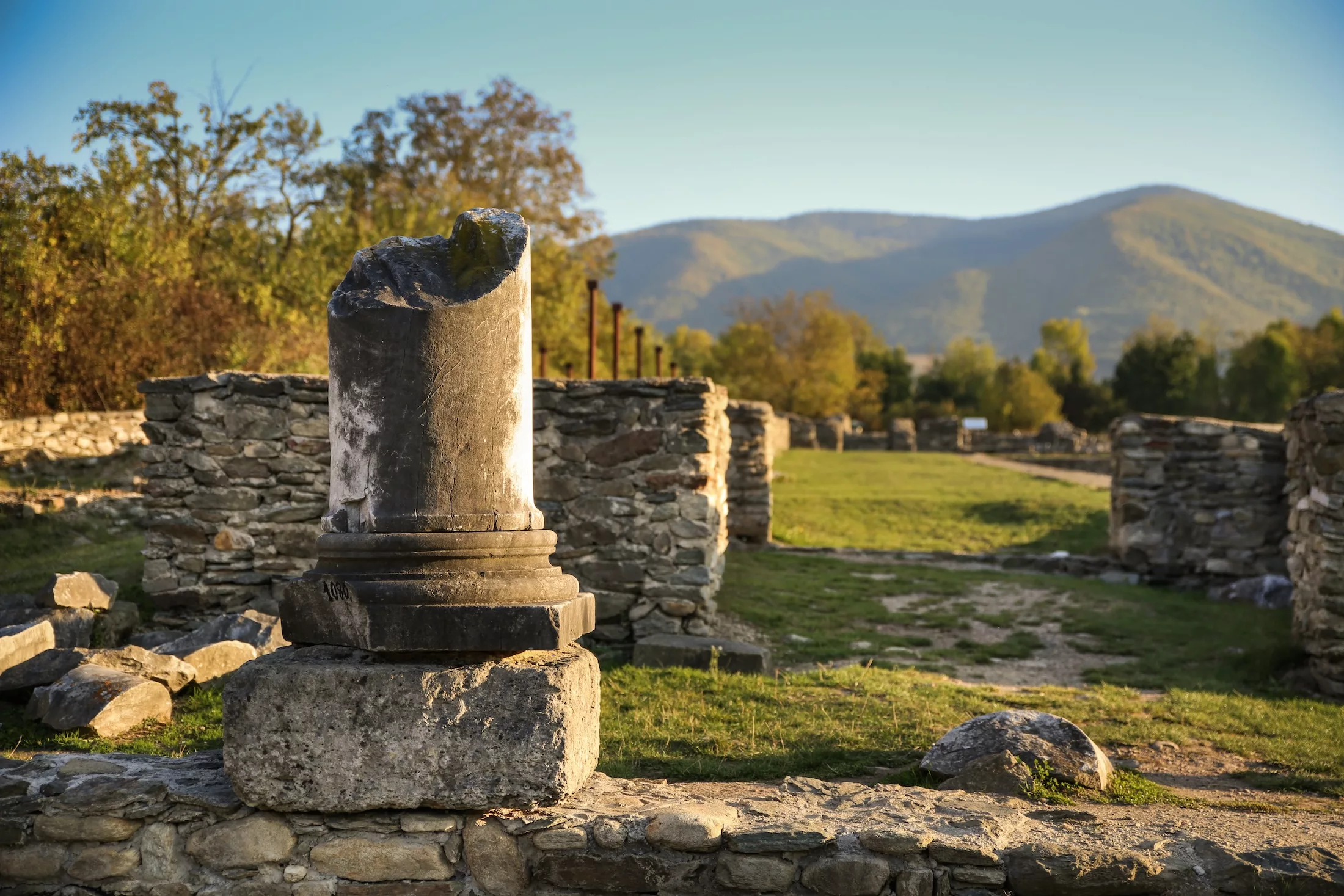
Ulpia Traiana Sarmizegetusa, located in Hunedoara County, Romania, is a remarkable archaeological site that preserves the ruins of a Roman colony established during the Roman Empire's rule over Dacia.
This ancient settlement was strategically positioned and featured Roman baths, a forum, an amphitheater, and other structures that reflected Roman architectural ingenuity.
Tomis, now part of modern Constanța, is famously known as the exile location of the Roman poet Ovid. This ancient city offers archaeological remains including Roman walls, an amphitheater, and thermal baths.
Capidava, situated along the Danube River, features well-preserved Roman fortifications, including walls, towers, and a temple.
Apulum, present-day Alba Iulia, was a significant Roman settlement in Dacia, where visitors can explore remains of the Apulum Roman Castrum, including various fortifications and civilian building ruins.
Peles Castle
Peles Castle, nestled in the breathtaking landscape of the Carpathian Mountains, is a jewel of Romanian heritage, exemplifying architectural magnificence and historical depth.
Constructed in the late 19th century, this Neo-Renaissance edifice was conceived by King Carol I of Romania as a summer retreat, showcasing the country's aspirations and royal elegance. Beyond its role as a royal residence, Peles Castle is a cultural beacon, housing an impressive collection of art, armor, and rare books within its lavishly appointed rooms.
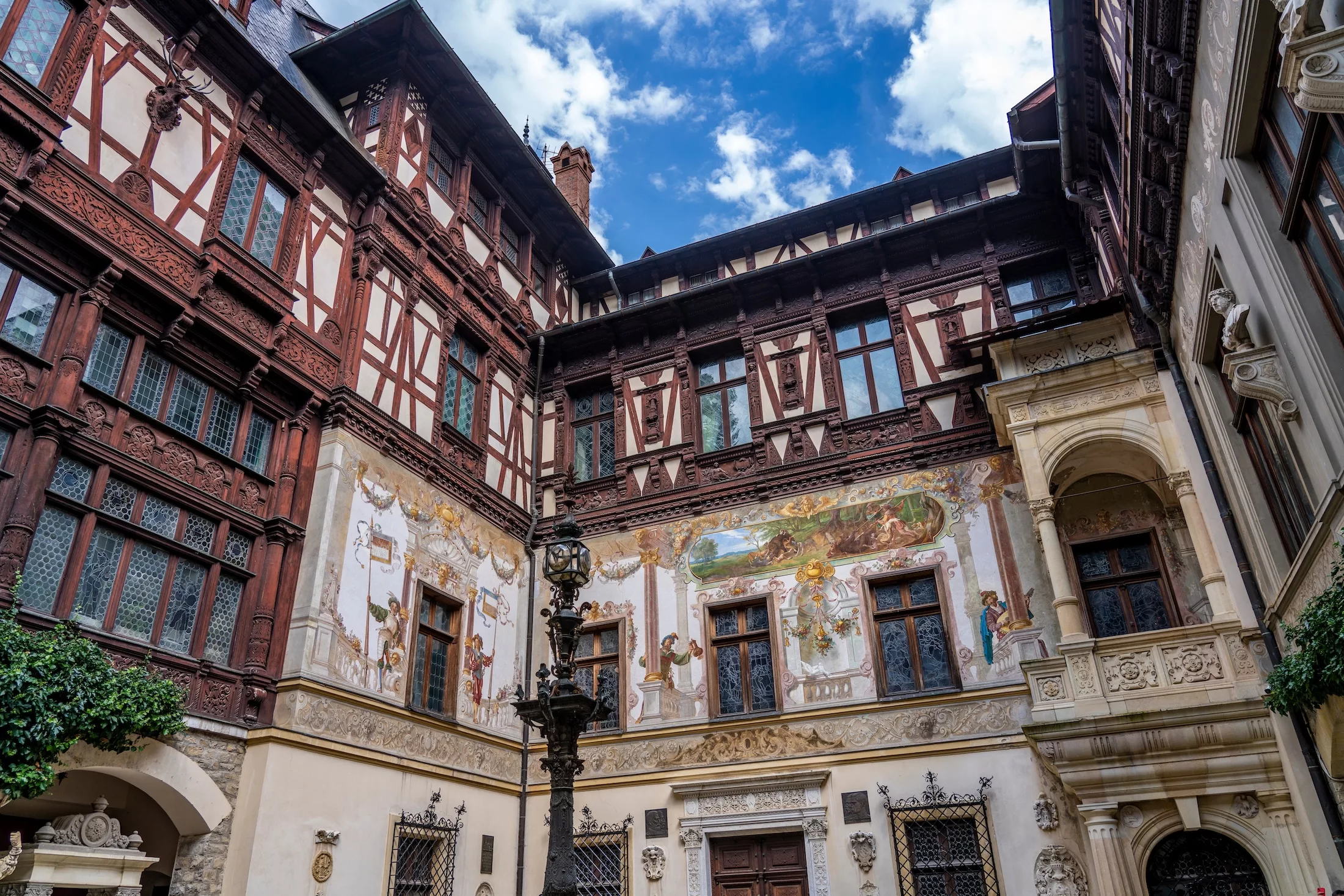
Each chamber within the castle tells a unique story, adorned with themes from world cultures, making it a global tapestry of artistic and historical narratives.
The castle's interiors are a marvel, featuring the grand Mirror Hall, renowned for its exquisite mirrors and elaborate wood paneling, and the Moorish Chamber, which captivates with its oriental motifs and intricate designs.
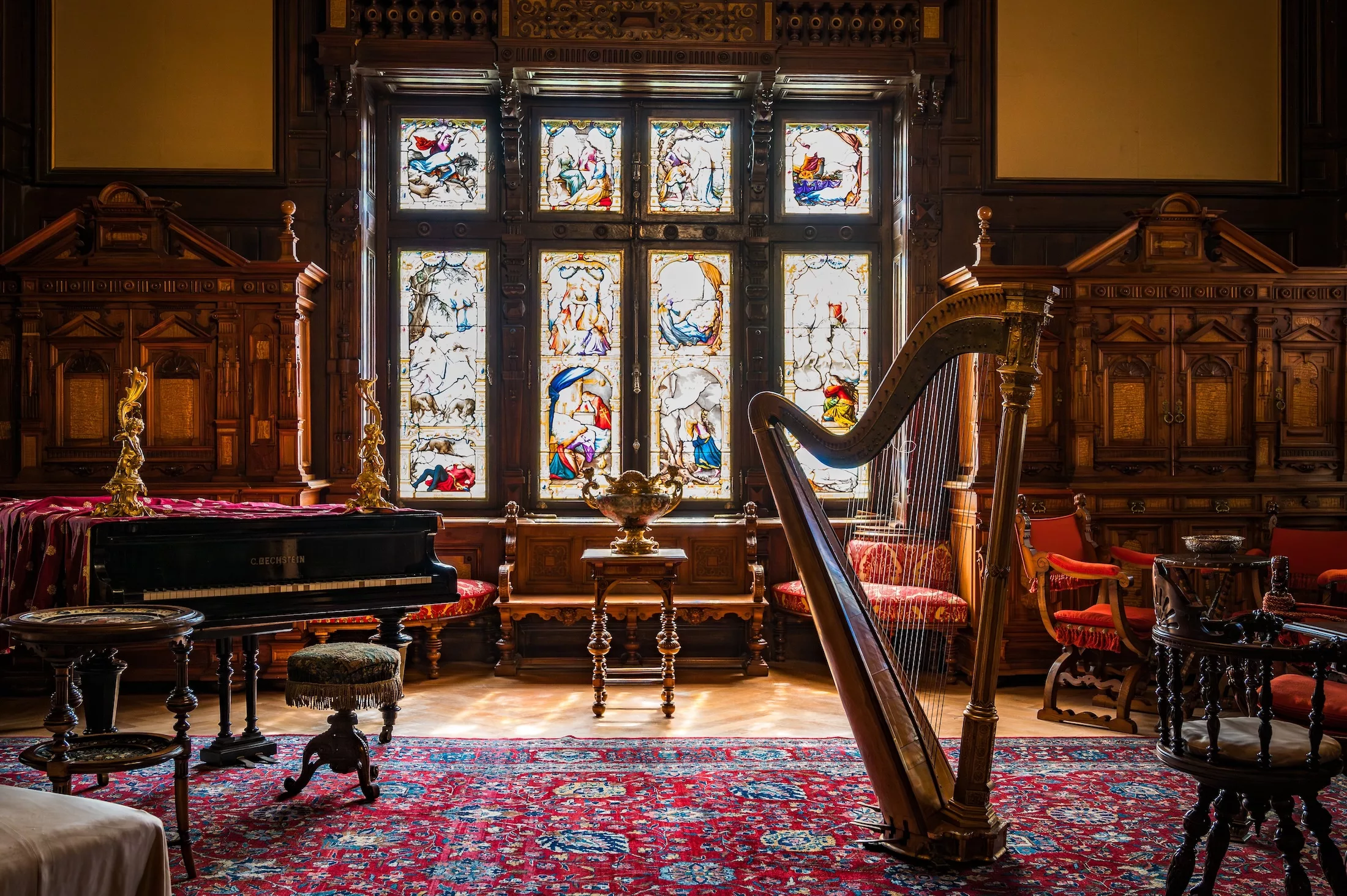
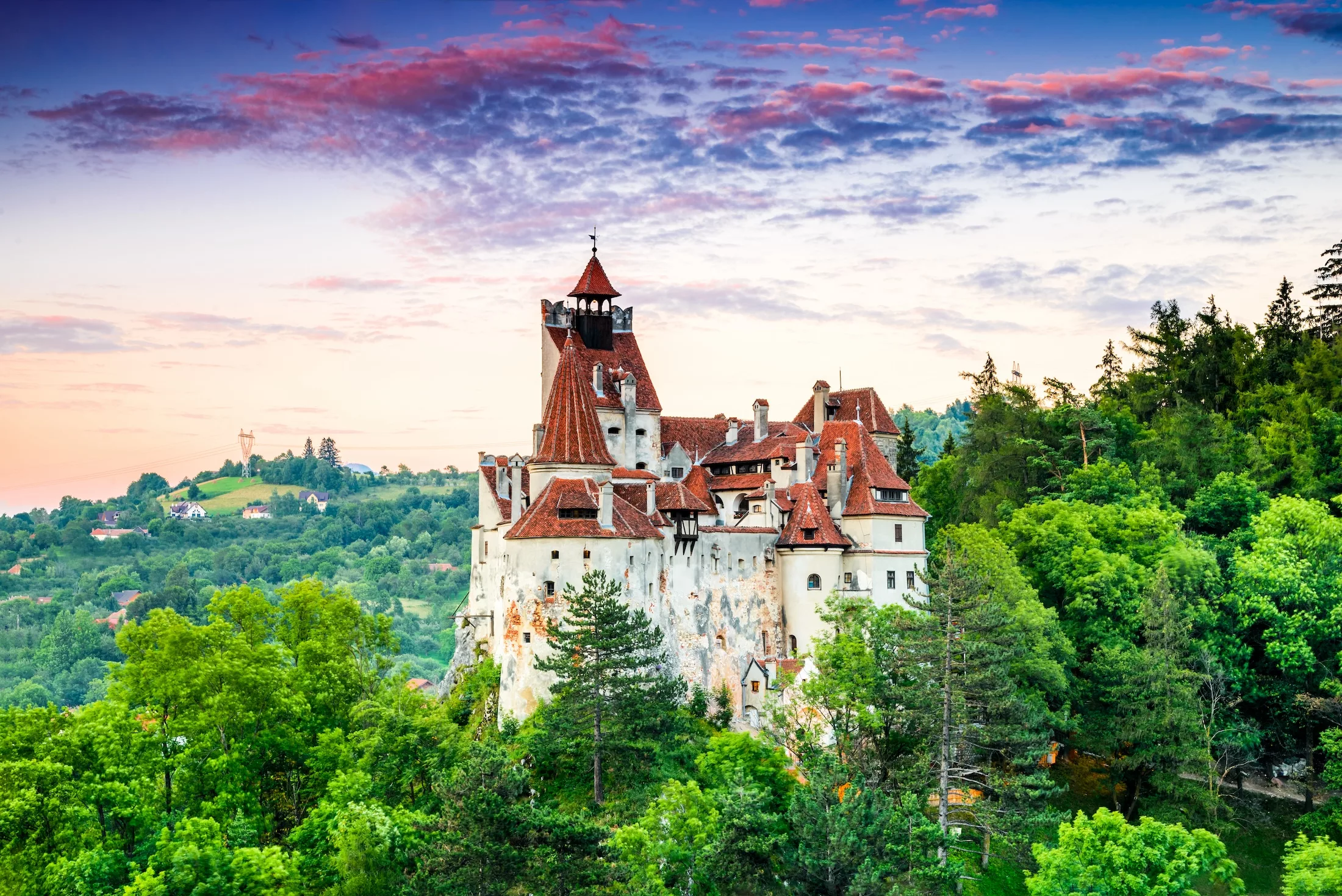
Bran Castle
Perched on a precipice in Transylvania, Bran Castle is the quintessential Gothic fortress, wrapped in the legend of Dracula and steeped in history.
Originally a 14th-century stronghold, it has evolved through time, becoming famously linked to Vlad the Impaler, albeit loosely, and embodying the essence of vampire lore.
Beyond its mythical vampire connections, the castle was a favored residence of Queen Marie of Romania, who infused the medieval chambers with Romanian tradition and Art Deco elegance.
Notably, Bran Castle's early history ties back to the Teutonic Knights, adding layers to its rich past. Its architecture, featuring secret passages and narrow staircases, deepens the mystery, while the surrounding landscapes offer a serene contrast to its formidable façade.
Corvin Castle
Corvin Castle, with its grand towers and sweeping ramparts, stands as one of Europe's largest and most impressive Gothic-style castles, nestled in the heart of Hunedoara, Romania.
This 15th-century masterpiece is steeped in history, originally serving as a fortress before becoming the residence of one of Romania's most notable figures, John Hunyadi.
The castle's architecture is a testament to medieval might, featuring a majestic drawbridge, high stone walls, and a well-appointed Knight's Hall, reflecting the era's grandeur and the power of its inhabitants.
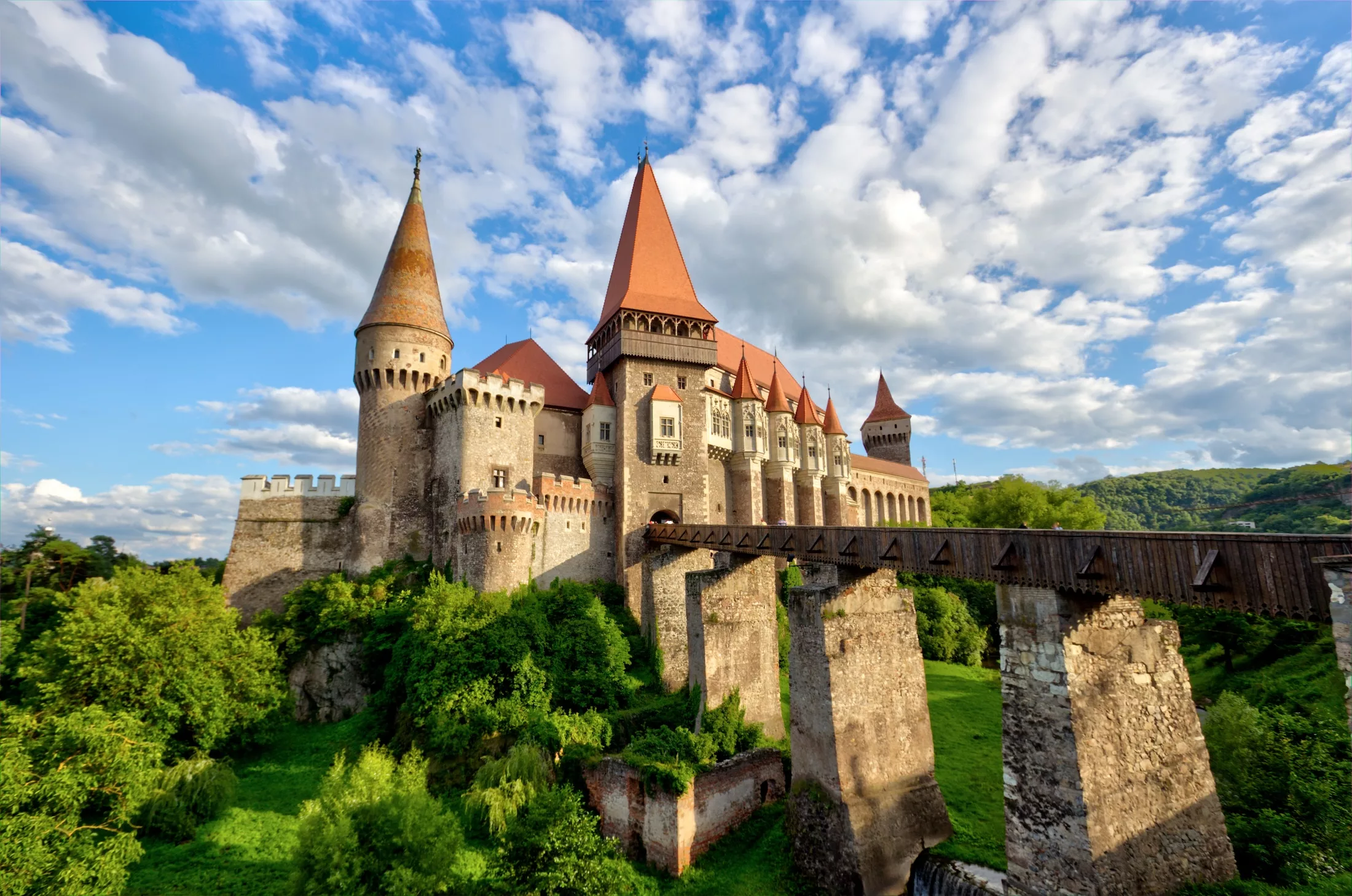
What sets Corvin Castle apart are its tales and legends, including the well within its courtyard, purportedly dug by Turkish prisoners over many years, promising freedom that they never attained.
The castle's interiors are equally fascinating, adorned with Renaissance furniture, expansive frescoes, and a collection of medieval artifacts that transport visitors back in time.
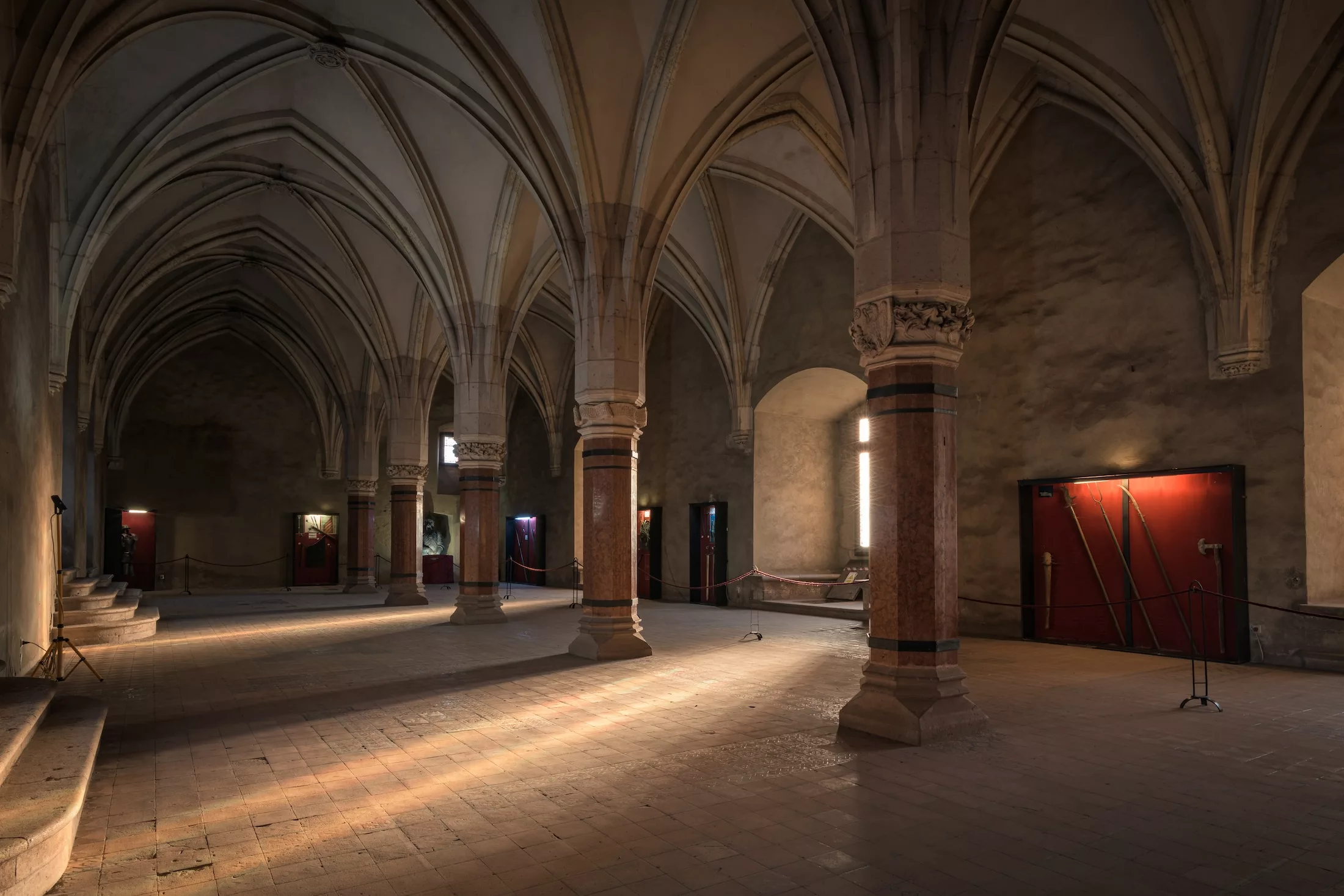
The Black Church
The Black Church, a striking Gothic edifice in the heart of Brasov, Romania, stands as a monumental testament to the region's medieval heritage. Named for its darkened walls resulting from a 17th-century fire, the church dates back to the 14th century and is renowned as one of Eastern Europe's largest Lutheran churches.
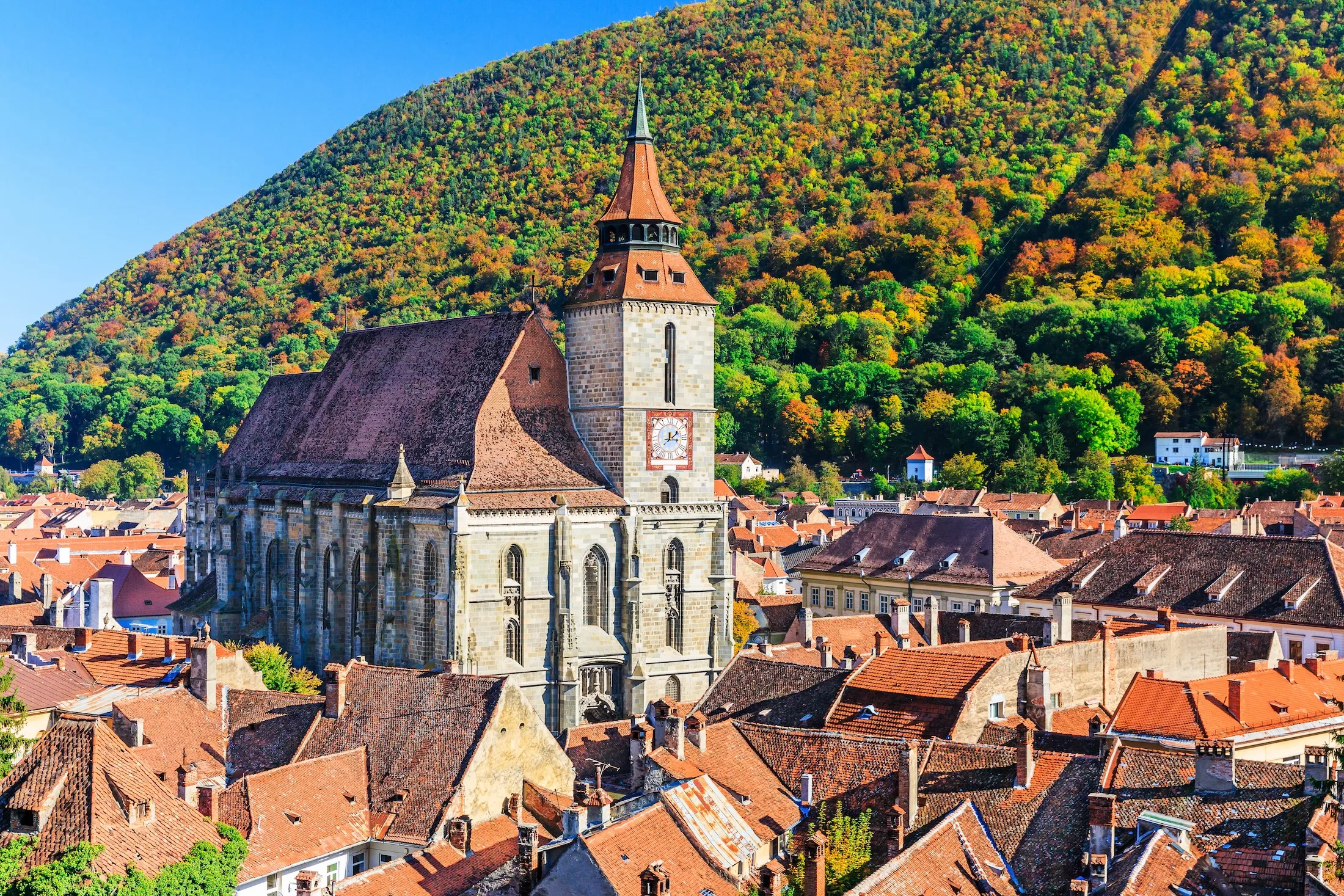
Its impressive features include a towering spire visible across the city, a richly adorned interior with a vast collection of Oriental rugs donated by Saxon merchants, and a remarkable 4,000-pipe organ that fills the space with melodious sounds.
Beyond its architectural and historical significance, the Black Church hosts an extensive array of medieval art, including a beautifully preserved fresco of the Holy Trinity. The church's resilience through history, surviving attacks and fires, adds to its mystique and allure, making it a symbol of Brasov's enduring spirit.
The Sibiu Lutheran Cathedral
The Sibiu Lutheran Cathedral, located in the historic heart of Sibiu, Romania, is a remarkable example of Gothic architecture and a beacon of the city's German heritage.
Constructed in the 14th century on the site of an older church, this cathedral stands out for its towering steeple, the highest in Romania, and its richly decorated interior, which houses an impressive array of art and historical artifacts.
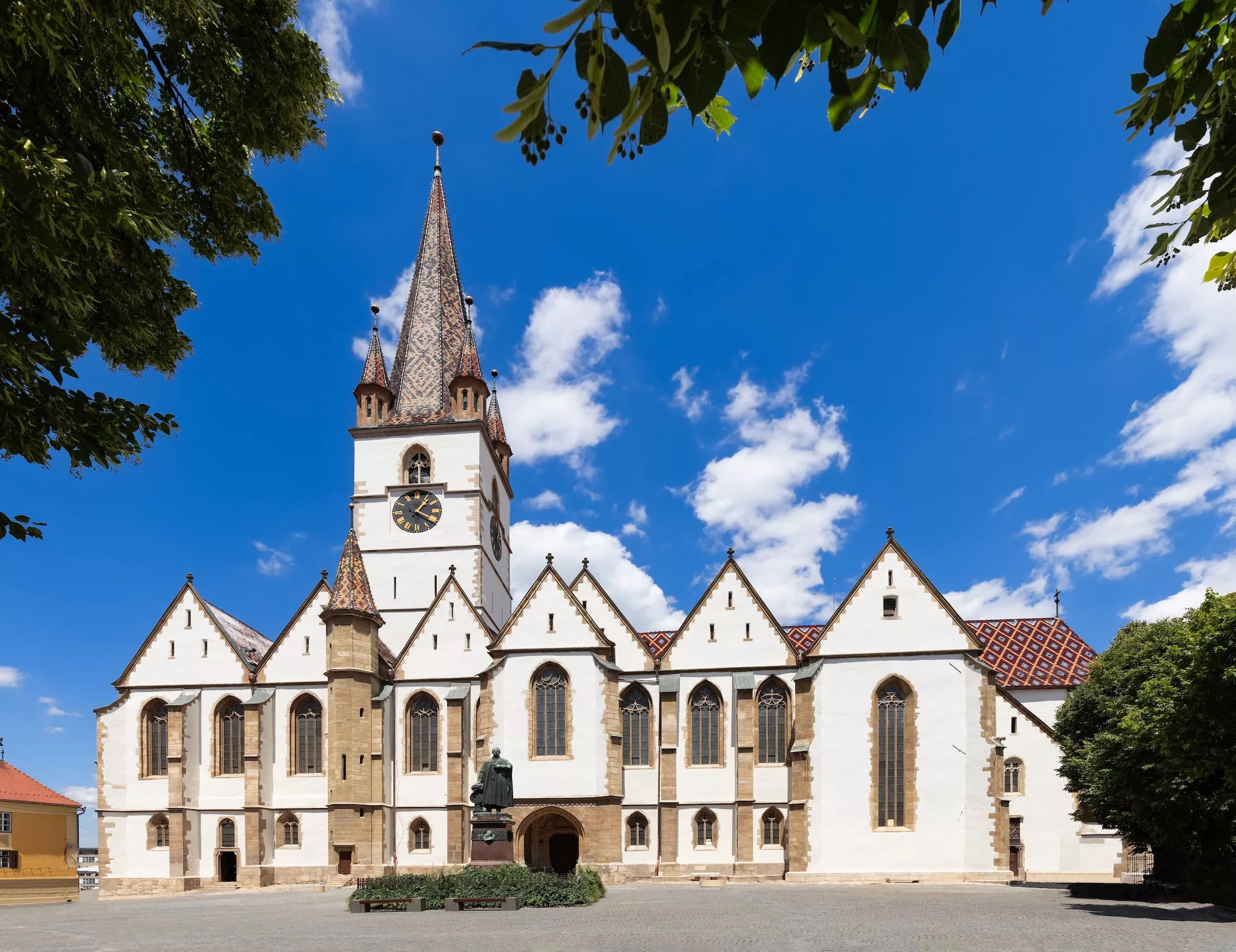
One of the cathedral's most notable features is its crypt, which serves as the final resting place for many important figures from Sibiu's past, including Mihnea cel Rău, son of Vlad the Impaler.
Additionally, the cathedral boasts a magnificent baroque organ built in 1671, known for its exceptional sound quality, making it a key venue for music performances and concerts.
Voroneț Monastery
Voroneț Monastery, often hailed as the "Sistine Chapel of the East," is a jewel of Moldavian medieval architecture and one of Romania's most precious cultural treasures.
Founded in 1488 by Stephen the Great, this Romanian Orthodox monastery is renowned worldwide for its exterior frescoes featuring an intense shade of blue, known as "Voroneț blue," which has puzzled art historians for centuries due to its enduring vibrancy and composition.
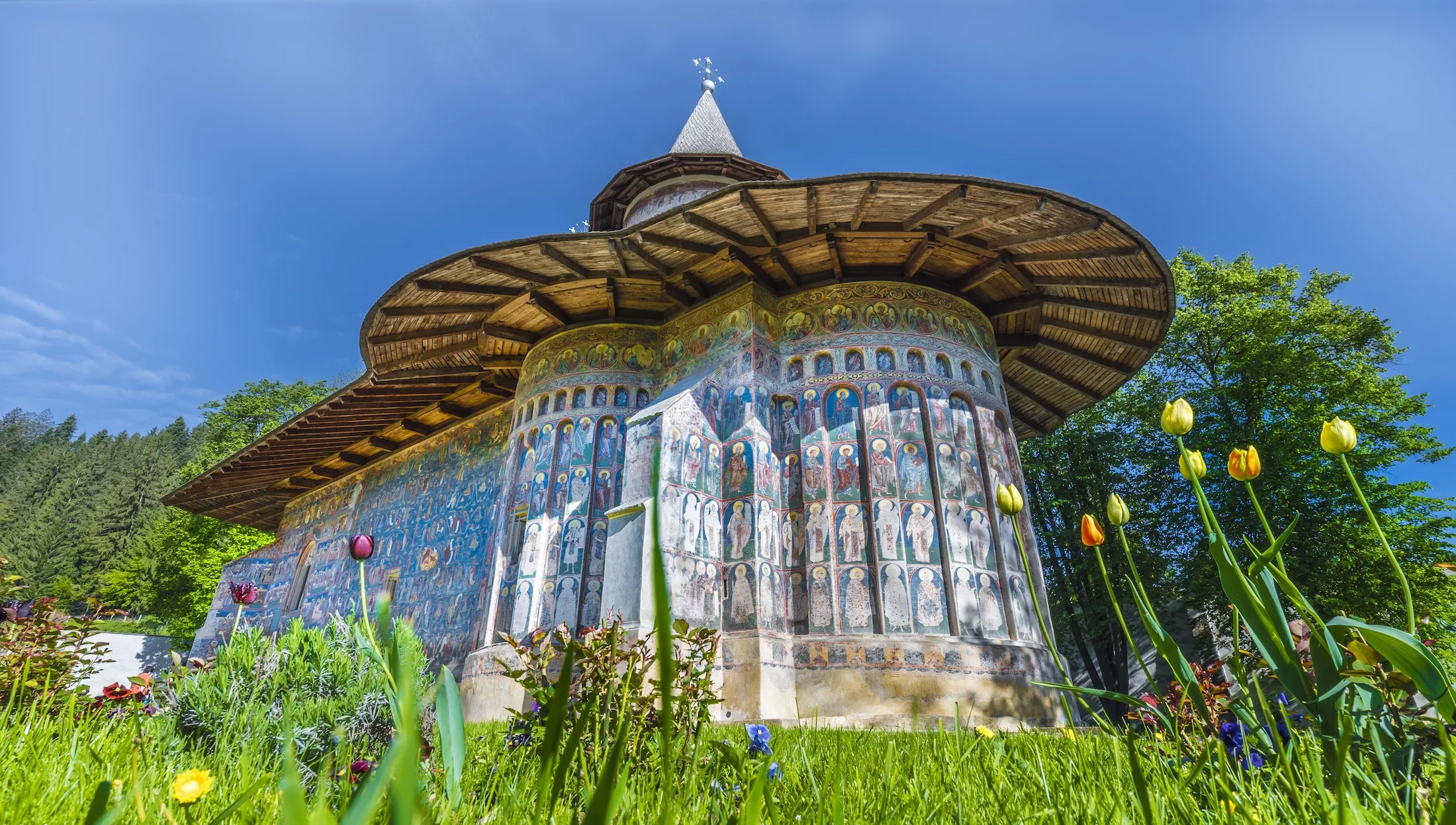
Located in the northeastern part of Romania, near Gura Humorului, the monastery is a masterpiece of Gothic and Byzantine architecture. Its most famous fresco, "The Last Judgment," is a monumental depiction that covers the western wall and stands as a testament to the artistic and religious fervor of the period.
These frescoes are celebrated for their detailed portrayal of biblical scenes, saints, and prophets, rendered in vivid colors that have miraculously withstood the test of time.
The Maramureș Wooden Churches
The Maramureș Wooden Churches, located in the northern part of Romania, are a collection of eight Orthodox churches that stand as monumental testaments to the region's deep-rooted woodworking traditions and religious devotion.
Constructed between the 17th and 19th centuries, these architectural marvels are distinguished by their tall, slender spires and intricate wooden carvings, embodying a unique blend of Gothic and Byzantine styles tailored to the local craftsmanship and aesthetic preferences.
What makes these churches truly remarkable is their construction method, which relies entirely on wooden joinery techniques without the use of metal nails, showcasing the exceptional skill of Maramureș craftsmen.
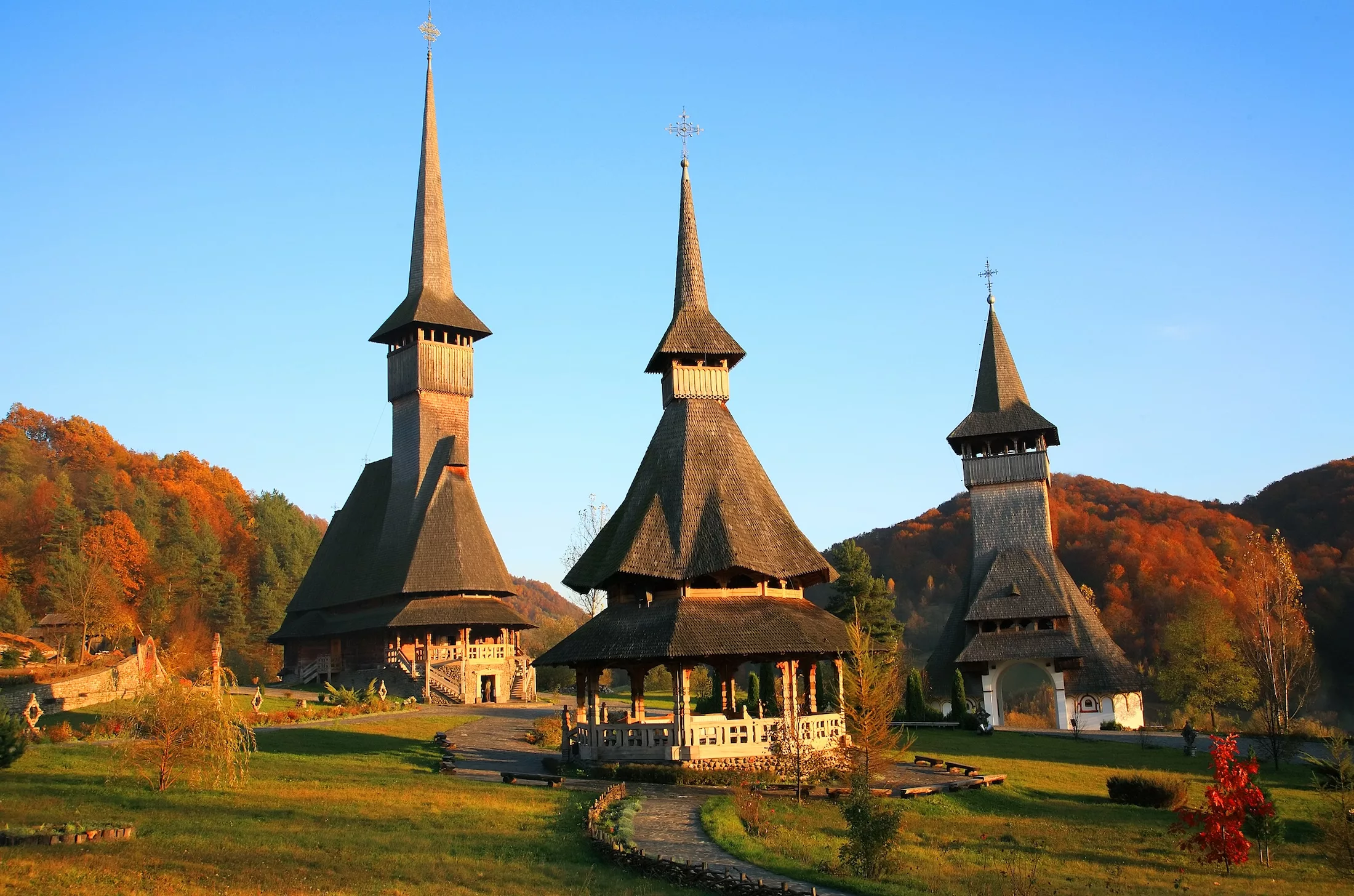
The interiors are equally impressive, adorned with vivid frescoes and iconostasis that narrate biblical stories and themes, serving both as places of worship and as living museums of medieval Christian art.
The Maramureș Wooden Churches are recognized as UNESCO World Heritage Sites, highlighting their cultural and historical significance. They stand as symbols of the enduring spirit and artistic prowess of the Maramureș community, reflect
Putna Monastery
Orthodox Christianity holds a profound place in the heart of Romanian culture and history, deeply woven into the fabric of the nation's identity.
The Romanian Orthodox Church, as the predominant religious institution, has been a beacon of spiritual guidance, cultural preservation, and historical continuity for Romanians throughout the centuries.
The country is dotted with a myriad of monasteries and churches, each telling its own story of faith, resilience, and artistry, spanning from the medieval period to modern times.
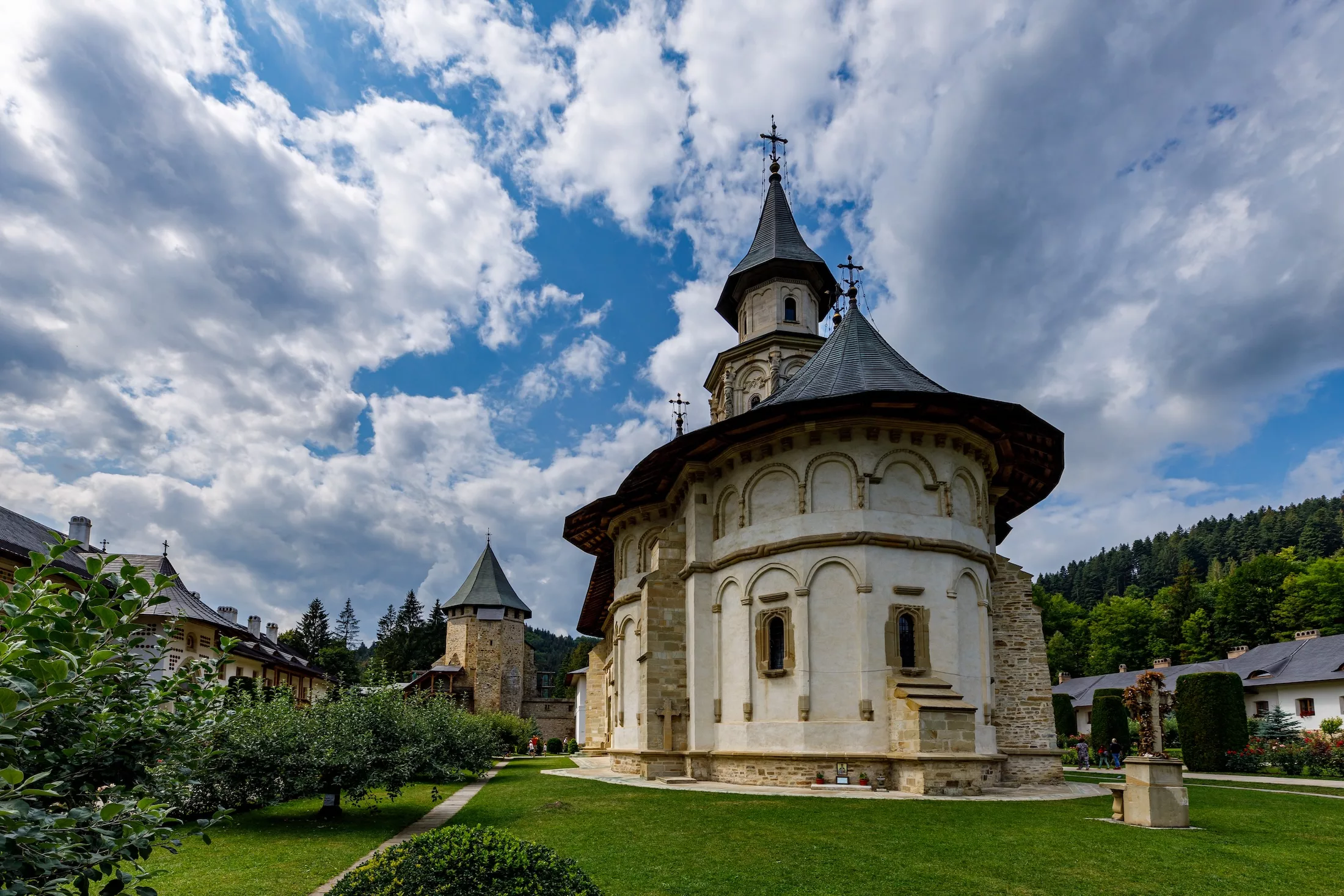
These sacred sites are not only places of worship but also custodians of Romania's rich heritage, housing invaluable icons, manuscripts, and frescoes.
Among these spiritual landmarks, Putna Monastery stands out as a jewel in Romania's crown of Orthodox Christianity.
Founded by Prince Stephen the Great in 1466, it is nestled in the picturesque landscapes of the Northern Bukovina region. Putna is revered not only as a center of religious devotion and pilgrimage but also as a cradle of Romanian culture and history.
The Merry Cemetery
The Merry Cemetery, located in the village of Săpânța, Romania, offers a unique and colorful take on the concept of death, celebrating life with humor and vivid artwork.
Known for its brightly painted crosses and epitaphs that whimsically narrate the lives of the deceased, this cemetery stands out as a cultural phenomenon unlike any other. Each tombstone features a distinctive carving and a poem that reveals a story, trait, or anecdote about the person it commemorates, often with a light-hearted or ironic twist.
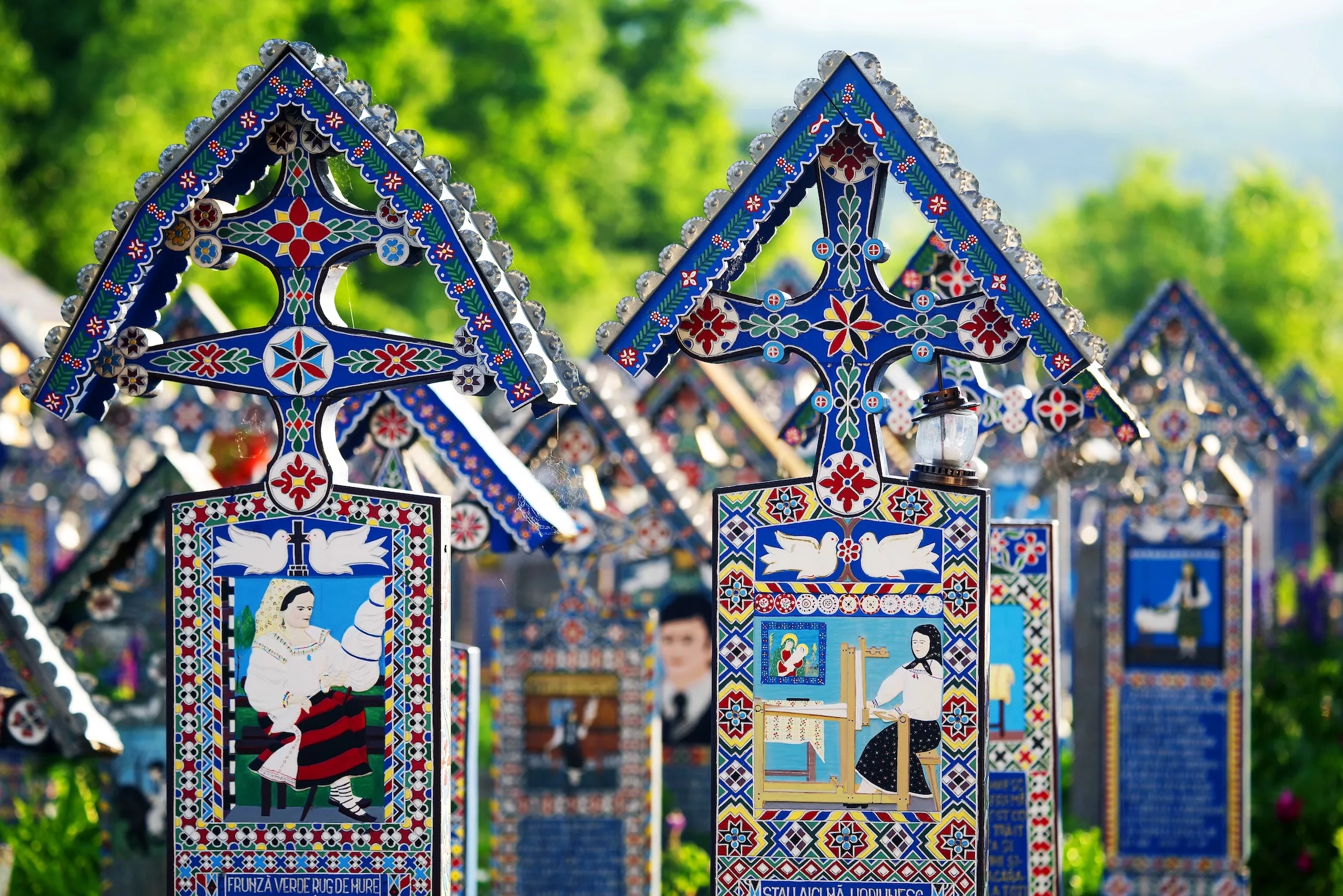
Initiated by local artist Stan Ioan Pătraș in the 1930s, the Merry Cemetery has grown into an open-air museum and a testament to the village's creative approach to remembering loved ones.
The use of vibrant colors and playful narratives breaks the traditional solemnity of cemeteries, offering a refreshing perspective on mortality and the afterlife.
Clay Castle of the Fairy Valley
Castelul de Lut ,Valea Zanelor, translating to the "Clay Castle of the Fairy Valley," is a captivating, fairy-tale-like structure nestled in the picturesque landscapes of the Făgăraș Mountains, Romania.
Unlike any traditional castle, this enchanting structure is made entirely of natural materials, primarily clay, straw, sand, and wood, creating a harmonious blend with the surrounding nature.
Its design draws inspiration from fantasy and fairy tales, with whimsical towers, curved walls, and organic shapes that seem to have sprung from the pages of a storybook.

Situated in Porumbacu de Sus, a short drive from Sibiu, the Clay Castle is a relatively recent addition to Romania's architectural landscape, aiming to offer visitors an escape into a world where nature and imagination intertwine.
The castle is not only a visual delight but also an embodiment of eco-friendly construction principles, showcasing how sustainable materials can be used to create structures of incredible beauty.
The Brâncovenesc style
Mogoșoaia Palace
The Brâncovenesc style, or Romanian Renaissance, flourished in late 17th to early 18th century Romania under Prince Constantin Brâncoveanu.
This architectural style blends Ottoman, Byzantine, Renaissance, and Baroque influences, creating a distinct aesthetic characterized by elaborate carvings, decorative motifs, high porticos, and open arcades.
Mogoșoaia Palace, located near Bucharest and built by Brâncoveanu at the end of the 17th century, is a prime example of this style.
It features ornate stonework, high arcades, and is set beside a picturesque lake, now serving as a museum and cultural center.
Sighișoara
Sighișoara's annual Medieval Festival brings the town's history to life
Sighișoara is a beautifully preserved medieval town nestled in the heart of Transylvania, Romania, known for its vibrant history and picturesque architecture.
Famous for its walled citadel, cobbled streets, and colorful buildings, Sighișoara stands as a UNESCO World Heritage site, embodying the essence of a traditional 16th-century Saxon town.
It is particularly renowned as the birthplace of Vlad the Impaler, the historical figure who inspired Bram Stoker's Dracula.
The Clock Tower, dominating the town center, offers panoramic views of the surrounding landscapes, while the town's historical churches and the School on the Hill reflect its rich cultural heritage.
The Palace of Culture in Iași
Grandiose architecture and rich repositories
The Palace of Culture in Iași is an architectural masterpiece and a cultural beacon, standing majestically in the heart of the city. With its neo-Gothic design, ornate facades, and towering spires, it captures the imagination and transports visitors to a bygone era.
Housing museums that showcase art, history, and science, it is not just a monument but a vibrant center for learning and inspiration. Illuminated at night, the palace becomes a breathtaking sight, symbolizing Iași's rich heritage and dynamic cultural life.
The Palace of the Parliament
The Palace of the Parliament is a prominent landmark in Bucharest
The Palace of the Parliament in Bucharest, Romania, stands as one of the largest and heaviest administrative buildings in the world. Initiated by Nicolae Ceaușescu during the communist era, this colossal structure is a testament to the excesses of Romania's totalitarian regime.
Featuring a blend of neoclassical and modern architectural styles, the palace boasts over a thousand rooms spread across 12 floors, including massive halls and a nuclear bunker, reflecting the grandiosity and ambition behind its creation.
Today, it serves multiple functions, housing the Romanian Parliament, the National Museum of Contemporary Art, and providing a venue for international conferences and events.

